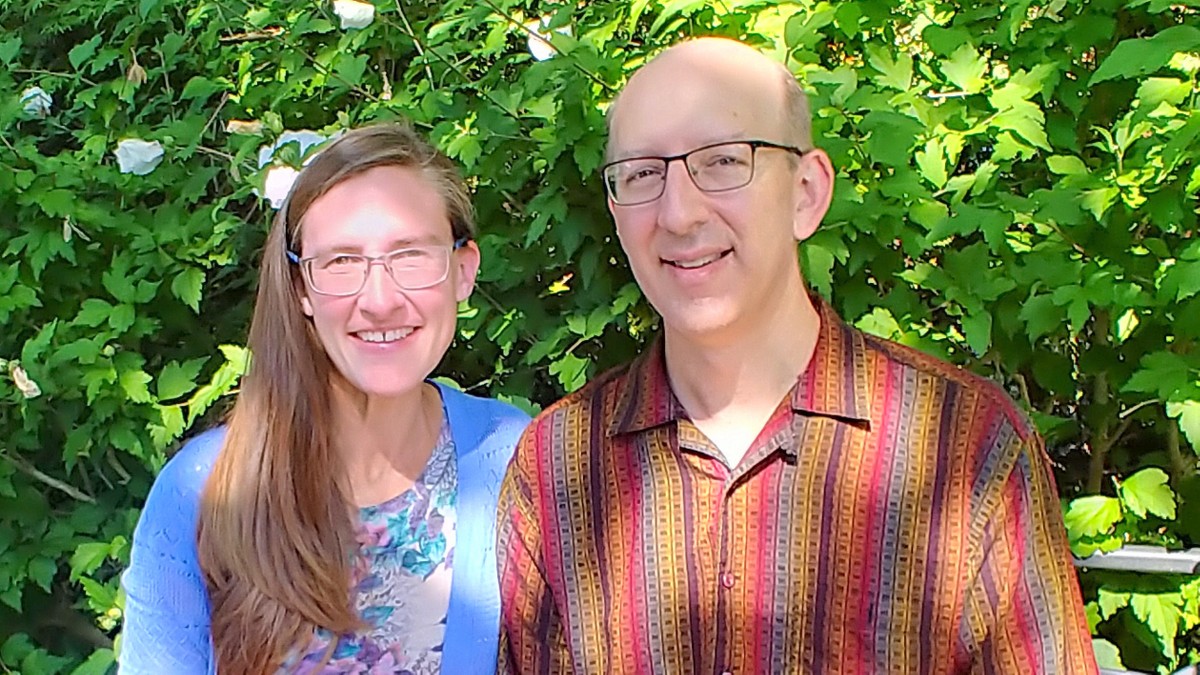
Bryce Denney (BD): : I have always been excited to take things apart and learn how they work so I developed an early interest in science and technology. Personal computers were new in the ’80s and my dad needed one for work so I got to “play” on an early Apple II and learn how to program it. My father was a biology researcher and my mother is a scientific writer and they love music as well.
There was always a classical radio station playing in our house. I started piano at a young age and learned various other instruments in school (bassoon, flute). When it was time to decide what I wanted to specialize in, I didn’t! I went to Oberlin College where I could major in both Physics and Piano Performance and I ended up with a career in technology and music as a hobby. Our crazy pandemic project (that grew into the documentary) turned out to need all these skills at once.
Kathryn Denney (KD): I started playing the piano for fun when I was four and made up my own melodies. My parents gave me all kinds of musical activities and training and I love being on stage in any capacity. Especially when other people are involved and I can be part of an amazing musical experience, I can think of no greater joy. I chose to teach public school music so that I could inspire others to appreciate these experiences and I tried to provide many opportunities for my students to grow individually and collectively.
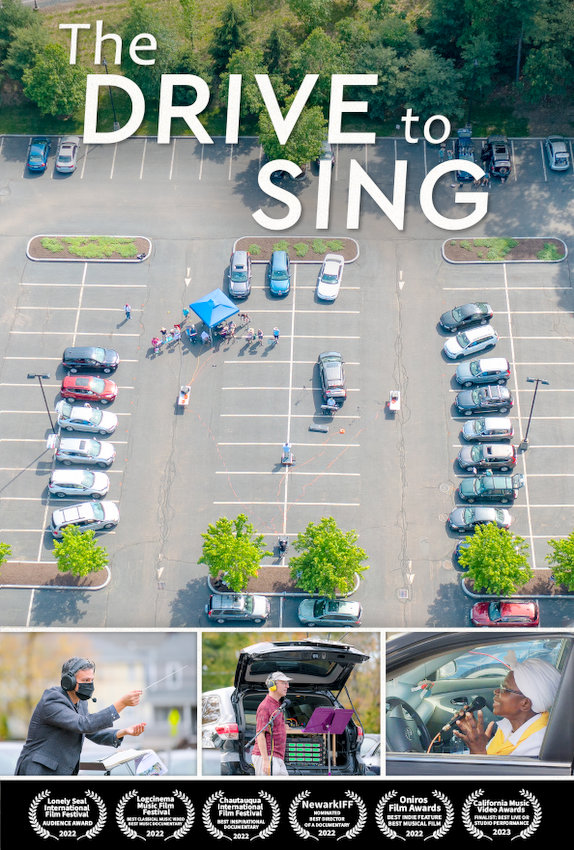
In addition to the curriculum requirements of my job, I chose to have my kindergarteners and my fifth graders put on a musical every year. I loved the way this galvanized a community, not just the people on stage but also the audience, who could temporarily have their minds all concentrating on the same thing. Halfway through my career, I got involved in community theater and had the chance to work with people with a little more self-control and a lot more training. I still sought to involve as many people as possible but I loved the increase in ambition and precision that I could expect!
How did you get into directing?
Bryce Denney (BD): When our children were little, we took hours and hours of video but I knew nobody would watch all of it. How could I condense all those clips into something fun and engaging? The highlights of our kids’ development became goofy fairy tales and musicals, growing more elaborate over the years as they could do more. Meanwhile, I’ve been the piano accompanist for many musical theater productions so I’ve often seen stage directors in action, including Kathryn.
But film can take you places and tell stories that would be tough on stage. In film, I enjoyed technical challenges such as making a DIY blue screen so that Tinkerbell (age 4) could fly. Whether it’s a film project, a music performance, woodworking, or writing software, I like planning something ambitious and beautiful and then working hard to finish and finally share it. However, our first film, “The Drive to Sing,” was completely unexpected, unscripted, and unplanned.
Briefly explain your latest work.
Kathryn Denney (KD): Everything I do involves gathering large numbers of people in close quarters to sing together. In March 2020, all of my projects came to a sudden stop. Preparing for multiple performances, my job was suddenly unsafe and forbidden. Singing over video conference formats was a disaster and we got tired of virtual choirs. It was such a depressing time, especially when we were instructed to isolate ourselves!
The Drive to Sing Documentary
Bryce Denney (BD): In mid-2020, we found a way to gather safely and make live music again: car choirs. Starting on our street and later in empty parking lots, we used microphones and FM radio to enable a whole choir to drive up and sing together. We met people online who were also excited about this, learned from them, and published instructions for other choirs to follow. The car choir concept spread to 20 states and 4 Canadian provinces and made it into the Today Show and New York Times.
Kathryn Denney (KD): Car choirs took over our lives for a whole year. We worked with a different Boston-area choir basically every week and documented every step of the way. Singers were delighted to see their friends in person again and to harmonize and rehearse. Some even performed in this strange new way. Many videos and news stories showed car choir singing, but none of them told the story of how the online community formed and how much it meant to singers.
Bryce Denney (BD): Only after a year of this did we think, “Maybe we should make a documentary?” We had edited family videos, but this project was at another level entirely. Car choir singing was already an important memory for a few thousand people and the story was inspiring to newcomers too. We needed to share this one with the world, not just our family and friends. “The Drive to Sing” is a testament to the power of human connection to inspire others to make a positive difference.
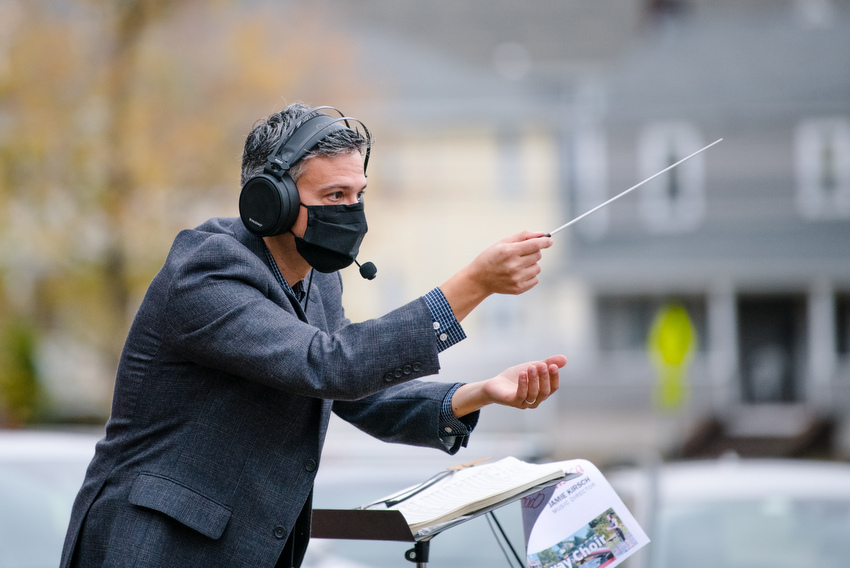
Explain key challenges on your last film?
Bryce Denney (BD): Many of the important musical events were already over by the time we decided to make this story into a documentary and re-enacting events was not practical. We interviewed people, gathered footage from other car choir groups, and used whatever footage we could. Choir videos full of copyrighted music were sent to us with enthusiasm and only later did we realize that many of the songs would be expensive to license.
One editing challenge was that we and our musical friends were part of the story so it was hard to be objective. Some scenes were very important to our friends even if the footage was not the best. Some memorable car choir disasters (e.g. tent blowing away) were never filmed because people were too busy trying to solve the problem to pick up a camera. Also, we couldn’t visit everyone in person because of COVID-19 travel restrictions so some interviews were done with a remote camera or even through Zoom.
Just like the musical project, we learned as we went, trying everything for the first time. We had never heard of a film festival or distribution before. Many experienced people were amazingly generous with their advice and encouragement. We hired assistant producer, Justin Lahue and narrator, Russ Gannon, who helped in so many ways and we did all the interviewing and most of the editing ourselves.
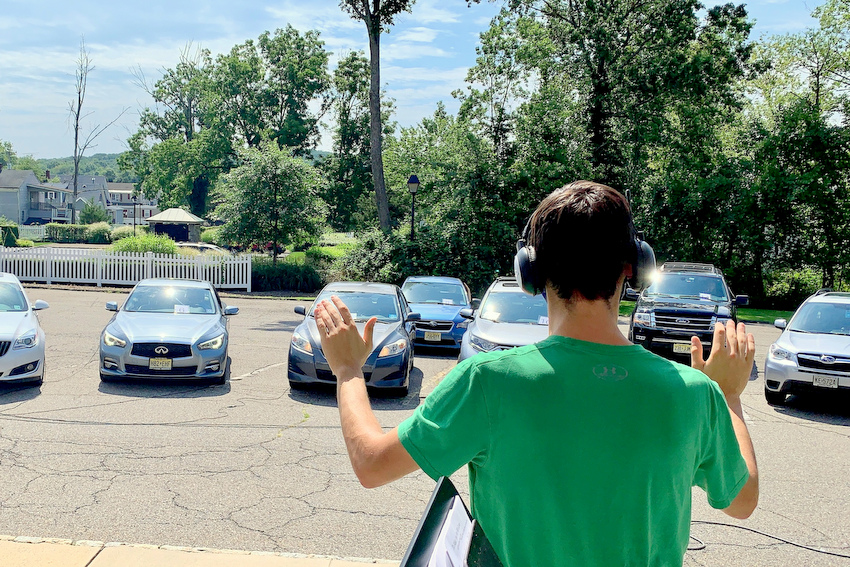
How do you choose a project to direct?
Bryce Denney (KD): More than any other, “The Drive to Sing” called us to make it, not the other way around.
How would you describe your work as a director?
Kathryn Denney (KD): As an elementary school teacher, I have often written and directed scripts with a group of kindergarten students or with 100 fifth graders. I learned how to plan meticulously and make sure everyone knows what to do at what point in the music and found a way to highlight any special skills kids had. Most of my school musicals provide an opportunity for that break dancer to do the worm across the stage and that gymnast to impress us with their back handspring.
A child with an obsession with light switches could be given the job of turning off the lights at the end of the scene and opening the curtain at the start of the show. I also make use of community experience: the welder who wants to make a funky-shaped tree as a set piece? Bring it on. But, if you give me a dog house that is too heavy for Snoopy to move, I’m going to need you to make it out of something lighter.
Bryce Denney (BD): Like the project illustrated in “The Drive to Sing,” my movie directing can be described as “scrappy.” I see an opportunity, dive right into it, and figure out the details later. Most of my ideas come from whatever is happening in my life or a suggestion from a family member.
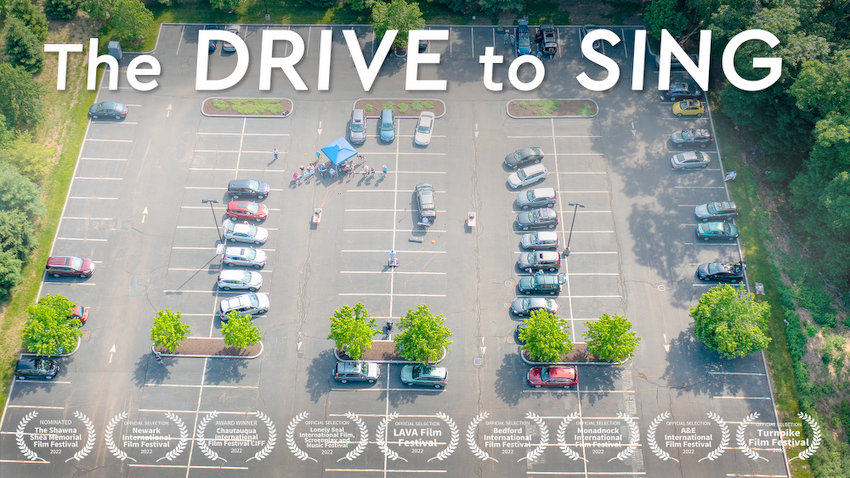
Do you often take courses to increase your craft?
Bryce Denney (KD): We don’t have any formal training in filmmaking. We Zoomed with friends-of-friends who had made documentaries before, learning about the process and asking for feedback on drafts. We’d like to thank Cindy McKeown, Nicki McGachey, Ellen Brodsky, and everyone else who gave suggestions. We learned many technical answers from YouTube videos and websites about filmmaking.
What books do you read?
Kathryn Denney (BD):
“Prodigal Summer” & “The Poisonwood Bible” by Barbara Kingsolver
“Cemetery Boys” by Aidan Thomas
“Red White and Royal Blue” by Casey McQuiston
What books do you read?
Bryce Denney (BD):
“Sweepings of the Street” by our daughter Amanda Denney
“Sapiens: A Brief History of Humankind” by Yuval Noah Harari
“The Righteous Mind: Why Good People are Divided by Politics and Religion” by Jonathan Haidt
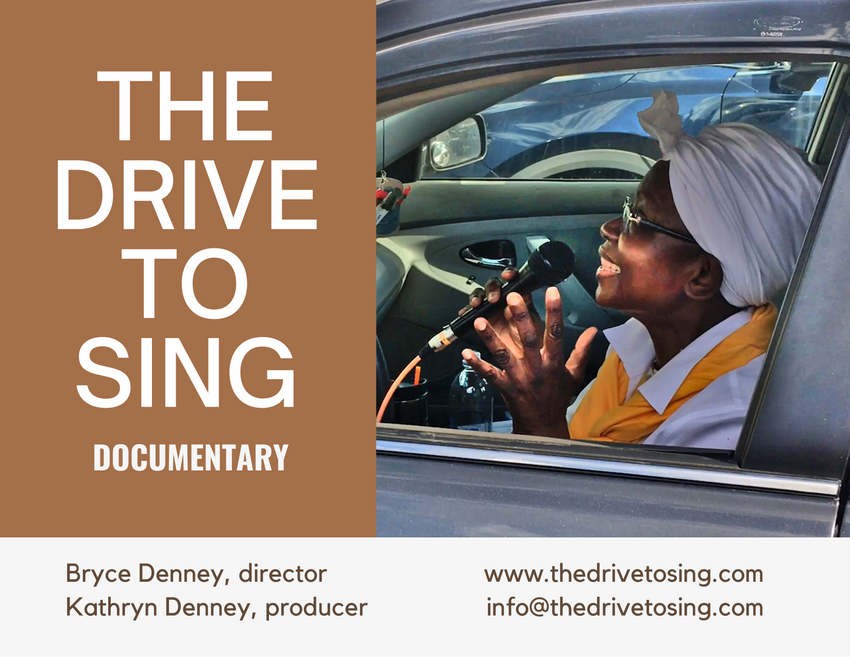
Why would you choose an actor, writer, or producer? What do you look for?
Kathryn Denney (KD): Professionalism, attention to deadlines, flexibility in bringing my vision to life, willingness to edit until it is at a high level, and enthusiasm for the project.
When you are offered a project, what things do you put in place to deliver a good job?
Bryce Denney (BD): A strong team, enough money, and abundant patience.
What ‘thing/situation’ helps you during production?
Bryce Denney (BD): The list of things we need during a production gets longer every time we discover something else we need. Another wireless mic? A set of headphones? A better light? Transportation to the perfect setting? A propane space heater to keep actors warm? Google Docs. Duct tape.
Explain a creative choice you took on the set of a recent production?
Bryce Denney (BD): Toward the end of the film, we see a barbershop group singing the final minute of the song “Guilty” by Akst, Whiting, and Khan. I found it so beautiful and emotional but it was kind of a long clip with very little motion on screen. We almost cut the song but I really wanted to save it. I wrote a new narration that tied back to the opening and Russ got the tone just right. We added some B-roll from that same concert and I love how it turned out. The only problem then was: now this felt like the end of the film! We had to adjust the timing of the next section, to keep things moving toward the real conclusion.
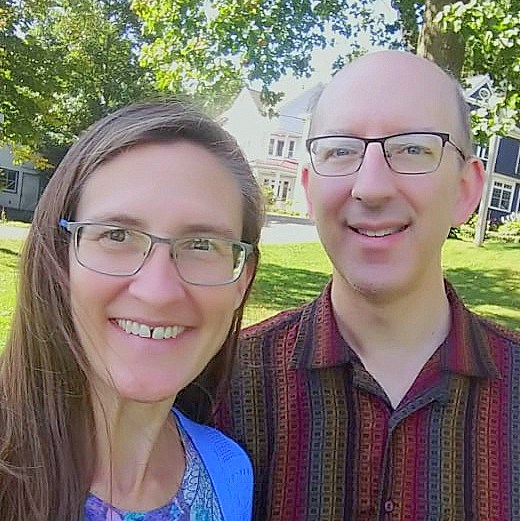
How do you advise directors to find projects?
Bryce Denney (BD): Choose projects that you are curious and passionate about because you’ll be spending a good chunk of your life on them.
How can filmmakers finance their projects?
Bryce Denney (BD): If I was starting a documentary project now, I’d have more of a sense of how much time and money would be needed. I would write a plan, involve people who care about the topic, and try to find more expert help and raise funds in advance. But for “The Drive to Sing,” we didn’t know what to expect or what to ask for. We made it through with a lot of mistakes and lessons learned.
One important lesson was to choose the music in your film with awareness of who owns it and how much it costs. Sometimes we could go back and replace a several-thousand-dollar song with a public domain one that served the same purpose. Other times, an expensive song was critical to the story, for example when it was the first song that a key choir sang in their cars.
We used a GoFundMe campaign to help pay for music licenses. We are fortunate that Bryce works in high tech as his day job so we had some flexibility with the budget.
What do you think a female director can do to get into the film industry?
Kathryn Denney (KD): She just needs contacts and a strong marketing team. There is nothing a man can do that a woman can’t. It is just the rest of the world that needs to acknowledge that we are strong, we deserve respect, and we are perfectly capable of holding our own.
Briefly write about your career?
Kathryn Denney (KD): I have made a career out of gathering people together to do something that utilizes all of their strengths. As an elementary school music teacher, my goal was always to inspire maximum participation and make sure everyone enjoyed what they were doing. I am good at talking to people and figuring out what makes them comfortable and how their skills can be stretched. I always have a song running through my head and have often taken the time to make them into musical compositions.
Bryce Denney (BD): My day job is very technical, so I gravitate toward creative (often silly) projects in my spare time. You can find various music performances and woodworking projects at http://thedenneys.org/. Our most popular video on YouTube is “We’re Going on a Bear Hunt” https://youtu.be/i0VIFGS2vCQ involving our kids and their cousins. Working on these smaller video projects for years gave me the skills and interest to tell stories in creative ways. The car choir project and “The Drive to Sing” have connected us with many musical/technical people. It was an unbelievable amount of work, a roller coaster of enthusiasm, and uncertainty. We’ve captured an unexpected little piece of music history in a way that people can enjoy for a long time.
Tell us what you think of the interview with Bryce and Kathryn Denney. What do you think of it? What ideas did you get? Do you have any suggestions? Or did it help you? Let’s have your comments below and/or on Facebook, Instagram, or Twitter.
FILMMAKER INTERVIEWS









